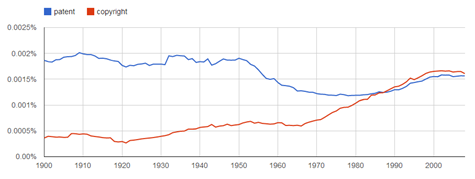By Jason Rantanen
Rexnord Industries, LLC v. Kappos and Habasit Belting, Inc. (Fed. Cir. 2013) Download 2011-1434.Opinion.1-18-2013.1
Panel: Newman (author), Lourie, Prost
In Rexnord v. Kappos, the Federal Circuit reversed the Board of Patent Appeals and Interferences' conclusion of nonobviousness, concluding that claims 1-14 of Patent No. 6,523,680 are obvious as a matter of law. The significant aspect of this opinion is the court's rejection of the PTO's arguments that "the Board need not consider other grounds that had been presented during the reexamination, for they had not been raised on the appeal to the Board" and that "the Board does not consider aspects
beyond those relied on by the examiner." Slip Op. at 12. The CAFC's ruling on the latter point, however, creates some significant tensions and does not cleanly resolve the issue.
The '680 patent relates to a mechanical convey belt formed of rows of belt modules interlinked by transverse rods. Rexnord filed a petition for inter partes review, arguing that claims 1-4 of the '680 patent were invalid as anticipated and obvious. The issue on appeal focused on a limitation in representative claim 1 that required a web with a diameter of less than 10 mm. In its petition for inter partes reexamination, Rexnord included the argument that the 10mm limitation was merely a "design choice." Slip Op. at 13. In holding that this element was obvious in light of the prior art, however, the Examiner did not reference the "design choice" argument. Instead, the Examiner stated that:
Thompson ’048 discloses the broad teaching of providing a corrugated intermediate portion with
an adjacent web portion to prevent objects from being pinched between adjacent modules where a
space bounded by the web, an outer end of the first link end and the sidewalls of the second link
ends is completely closed. It would have been obvious to one of ordinary skill in the art to [include
in] the modules of Horton ’248 . . . a web adjacent the corrugated portion to prevent objects from being pinched between adjacent modules as taught by Thompson ’048
Slip Op. at 9 (emphasis added).
Habasit, the patent owner, appealed the examiner's rejection to the BPAI. In its appeal, Habasit argued that the examiner erred because none of the references disclosed a space with a diameter less than 10 mm, as required by the claims. Although only the second argument is discussed in the CAFC opinion, Rexnord raised two arguments in response: (1) both Palmaer and Thompson disclosed a completely closed space (i.e.: a space with a diameter of 0 mm) and (2)
Thompson, Jr. et al. goes beyond merely disclosing a closed space in a preferred embodiment, and teaches the exact subject matter that Habasit asserts is novel in the '680 Patent. Despite the efforts by Habasit to distort the teachings of Thompson, Jr. et al., the reference clearly teaches solving the identical problem, see col. 1, lines 26-34 of Thompson, Jr. et al. (“objects being conveyed are subject to being caught in the gaps between the links”), solved by Habasit using an identical solution, see col. 14, lines 38-41 of Thompson, Jr. et al. (“the plates 51 on the links 25 cover the gaps 37 to prevent catching articles therein, while providing movement between adjacent links so as to allow traversing of a radiused section”). Accordingly, Thompson, Jr. et al. clearly teaches one skilled in the art to prevent objects from being pinched between modules by modifying Horton to at least partially, or completely, cover a gap in which the object can be pinched.
2008 WL 8119276.
The Board ruled in favor of Habasit, holding that "the Examiner has not identified where the prior art discloses that this space has a diameter of less than 10 mm as required by the claims," Slip Op. at 10, quoting Board opinion at 11, and rejecting the space of 0 mm argument. In reaching this conclusion, the Board did not discuss Rexnord's second argument above. Slip Op. at 9.
In its request for rehearing from the Board decision, Rexnord subsequently raised two arguments relating to the 10mm limitation: that the 10 mm spacing was inherent in the prior art and that it was merely a design choice in light of the prior art. The Board denied rehearing, stating that “Rexnord’s reasons as to why it would have been obvious to construct a space as recited in the claims (Request, 3–5) were not the rationale of the Examiner’s rejection.” Slip Op. at 11, quoting Dec. on Rehearing at 3.
On appeal, the CAFC rejected Rexnord's inherency argument but agreed with its obviousness argument. The main aspect of the appeal, however, was the Federal Circuit's rejection of the PTO's argument that Rexnord couldn't argue grounds for affirming the rejection that were not articulated by the Examiner:
When Habasit appealed the examiner’s decision, Rexnord was not barred from presenting this argument in defense of the examiner. The PTO states in its brief on
this appeal:
Just as this Court does not entertain arguments made outside of appellant’s opening brief, see, e.g., In re Watts, 354 F.3d 1362, 1367 (Fed. Cir. 2004); In re Schreiber, 128 F.3d 1473, 1479 (Fed. Cir. 1997), the Board has a rule that similarly bars the presentation of new arguments outside appellant’s opening brief (absent circumstances not alleged here), see 37 C.F.R. § 41.79(b).
PTO Br. 24. We observe that Rexnord was not the appellant before the Board, and that the premise is an incorrect statement of the appellate process. On judicial review, the correctness of the decision appealed from can be defended by the appellee on any ground that is supported by the record, whether or not the appellant raised the argument.
While this general point seems to be solid, the opinion uses it to support two rules that are in tension: (1) that the appellee can include in its response brief arguments that it raised before the examiner but were not discussed in the examiner's decision ("When Habasit appealed the examiner's decision, Rexnord was not barred from presenting this argument in defense of the examiner," Slip Op. at 13), and (2) that the appellee before the Board does not need to raise those arguments until its request for reexamination ("The issue was fully raised before the examiner, and these references were not again a patentability issue until after the Board reversed the examiner," Slip Op. at 13; "Rexnord asked the Board on rehearing to consider the other grounds before the examiner, in support of the examiner's decision," Slip Op. at 14).
In other words, the CAFC seems to be saying that the appellee to the board can raise these arguments in its response brief or it can wait until it files its request for rehearing (or maybe that it can only raise these arguments in its request for rehearing; I'm not sure given the court's ambiguity). Both seem somewhat inconsistent with the way appellate practice usually works: if an appellee doesn't argue an issue in its responsive brief, it generally can't argue that issue in its request for rehearing regardless of whether it made the argument before the lower tribunal.
Note that this opinion invovled an appeal from the BPAI, which is now the Patent Trial and Appeal Board. If it carries over into PTAB practice, however, it could have significant consquences for how appeals are structured.
 by Dennis Crouch
by Dennis Crouch 
 By Dennis Crouch
By Dennis Crouch 
 by Dennis Crouch
by Dennis Crouch